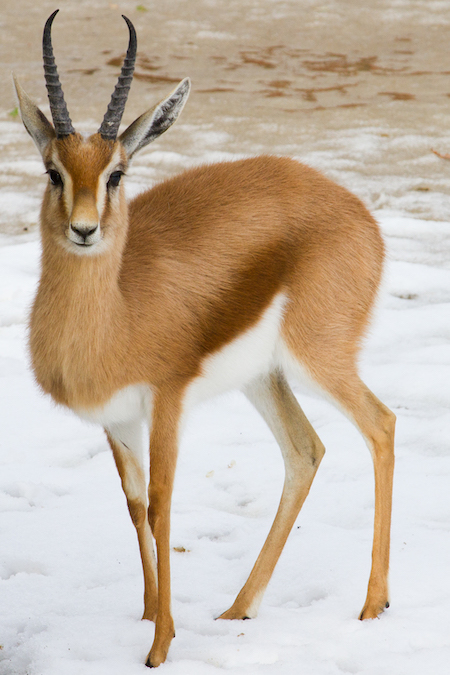|
The Gazelle
Dorcas gazelle
Spellbound creature, can two chiming
words ever achieve the rhyme
which pulses like a portent within you?
Leaf and lyre grow from your head
and all of you moves like a metaphor
through love-songs whose words, soft
as rose petals, settle on the eyes of one
who finishes reading and closes them,
and sees you, transported there, as if
your legs were spring loaded
but holding fire, while your neck lifts
your head to listen - like a girl
pausing while bathing in the forest,
the forest lake in her turned face.
English translation by Paul Archer of the poem Die Gazelle by Rainer Maria Rilke. The sonnet was written in Paris in July 1907. Rilke would have seen the gazelle at the Jardin des Plantes in Paris which had a small zoo; he uses the latin name 'Dorcas gazelle' in the subtitle. The sculptor Rodin encouraged Rilke to closely observe the subject of a poem for inspiration, rather than wait for inspiration to arrive of its own accord. The first product of this approach had been written one year earlier, The Panther.
The fourth line of the poem refers to the ears of the gazelle, which can be likened to leaves, and the horns that form the shape of a lyre.

Die Gazelle
Gazella dorcas
Verzauberte: wie kann der Einklang zweier
erwählter Worte je den Reim erreichen,
der in dir kommt und geht, wie auf ein Zeichen.
Aus deiner Stirne steigen Laub und Leier,
und alles Deine geht schon im Vergleich
durch Liebeslieder, deren Worte, weich
wie Rosenblätter, dem, der nicht mehr liest,
sich auf die Augen legen, die er schließt:
um dich zu sehen: hingetragen, als
wäre mit Sprüngen jeder Lauf geladen
und schüsse nur nicht ab, solang der Hals
das Haupt ins Horchen hält: wie wenn beim Baden
im Wald die Badende sich unterbricht:
den Waldsee im gewendeten Gesicht.
For more translations of poems by Rainer Maria Rilke, go to Translations. |

